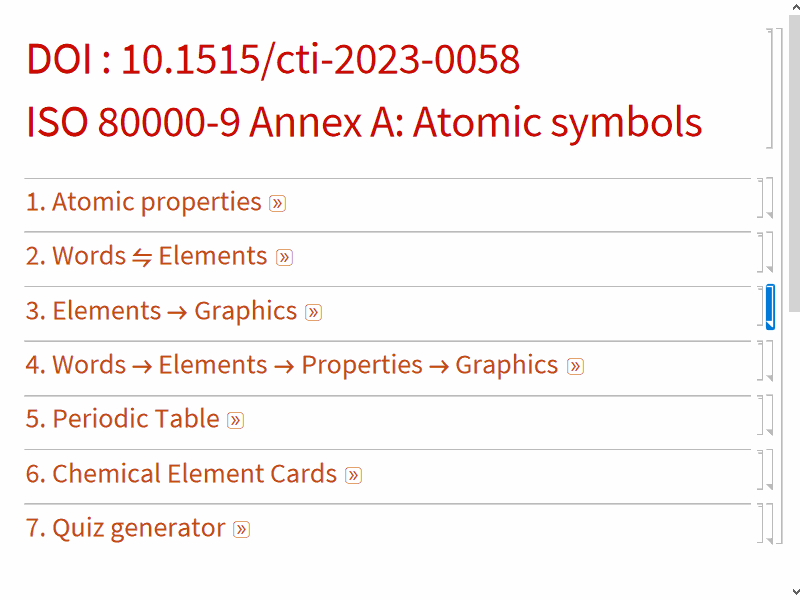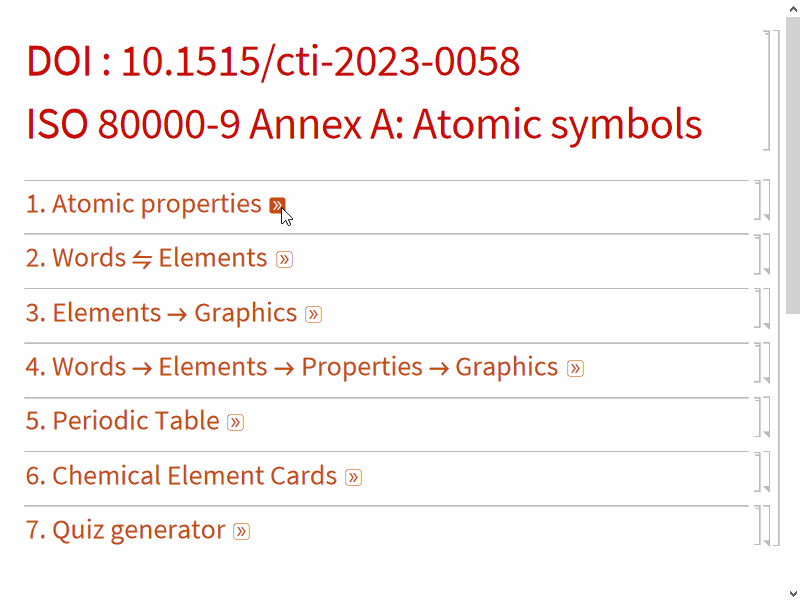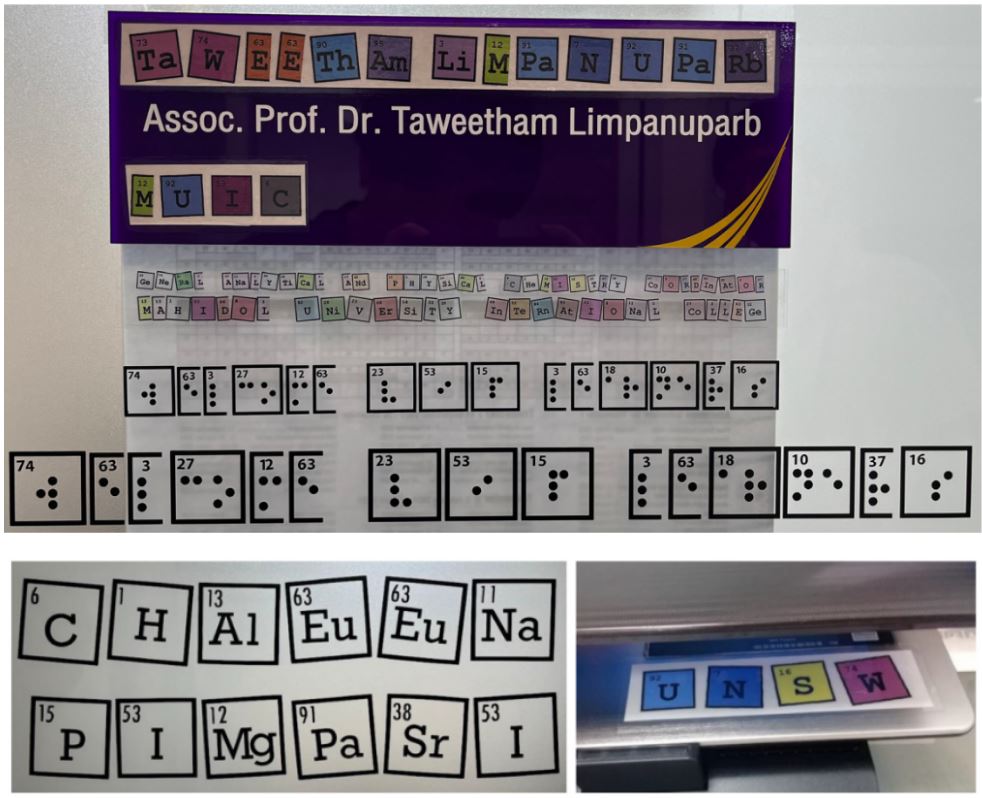

ABSTRACT (original article): A program for writing words (or personal names) by combining chemical element symbols is developed in the context of classroom activity to introduce the periodic table, properties of elements, and periodic trends. We provide multiple examples and possible ideas to improve student engagement and create an inclusive environment in the classroom. Common confusions and mistakes made when learning the periodic table are tabulated and discussed. In addition to spelling words and creating graphics using element symbols, the program can display and print out properties of elements as part of the word-building game. CITATION (original article): Limpanuparb, T., Chiranon, W., & Intaraprasit, M. (2024). Building words from chemical elements: a fun and inclusive approach to introduce the periodic table. Chemistry Teacher International, 6(3), 311–321. https://doi.org/10.1515/cti-2023-0058
Introduction
This notebook is designed to introduce students to the periodic table in an engaging and inclusive manner. It allows users to spell words, including personal names, by combining chemical element symbols. This notebook integrates chemical education with puzzles and games to enhance student engagement, helping them memorize element properties, symbols, and periodic trends. The notebook also supports displaying and the properties of elements as flashcards, making it a versatile tool for both introductory and advanced chemistry lessons. 
It allows users to spell words and names using chemical element symbols, making learning fun and personalized. The notebook also displays and prints element properties such as atomic number and other chemical characteristics, helping reinforce knowledge. With a focus on inclusivity, it integrates storytelling and tactile materials, such as braille, for visually impaired learners. Built with customizable Mathematica code, the notebook offers flexibility, enabling instructors to adapt it to different educational needs. It also supports advanced learning by linking periodic trends, molar mass, and other properties, making it suitable for both introductory and advanced chemistry lessons. Additionally, the notebook allows users to create lasting educational artefacts, such as stickers and T-shirts, promoting continued learning beyond the classroom.
Word and name spelling with chemical symbols:
Users can create words or names by combining element symbols from the periodic table, making learning fun and interactive. This feature enhances student engagement and can be adapted to fit various classroom contexts. The notebook also allows customization of output graphics, including options such as color intensity, font type (including Courier or Braille), and randomized tilting of symbol blocks.

Integration of elemental properties:
The program displays and prints the properties of the selected elements, such as atomic number, symbol, and other chemical characteristics, as part of the word-building game. Beyond basic memorization, the notebook allows the exploration of periodic trends and more complex properties like molar mass, abundance, and electronegativity.

Artefact creation for educational use:
The output from the notebook, such as custom element-based words, can be printed on various materials (e.g., stickers, cards), creating lasting educational artefacts that students can use in and outside the classroom. 
Elemental flash cards:
The notebook also allows for the creation of elemental cards that can be used for educational purposes. Our group has developed a card game based on elemental symbols, which is available for purchase at https://lnwgo.com/qr/p/383292/340?s=c27a09f4 

Link to notebooks, printouts, and images
https://www.degruyter.com/document/doi/10.1515/cti-2023-0058/downloadAsset/suppl/jcti-2023-0058suppl_001.zip

Full Code